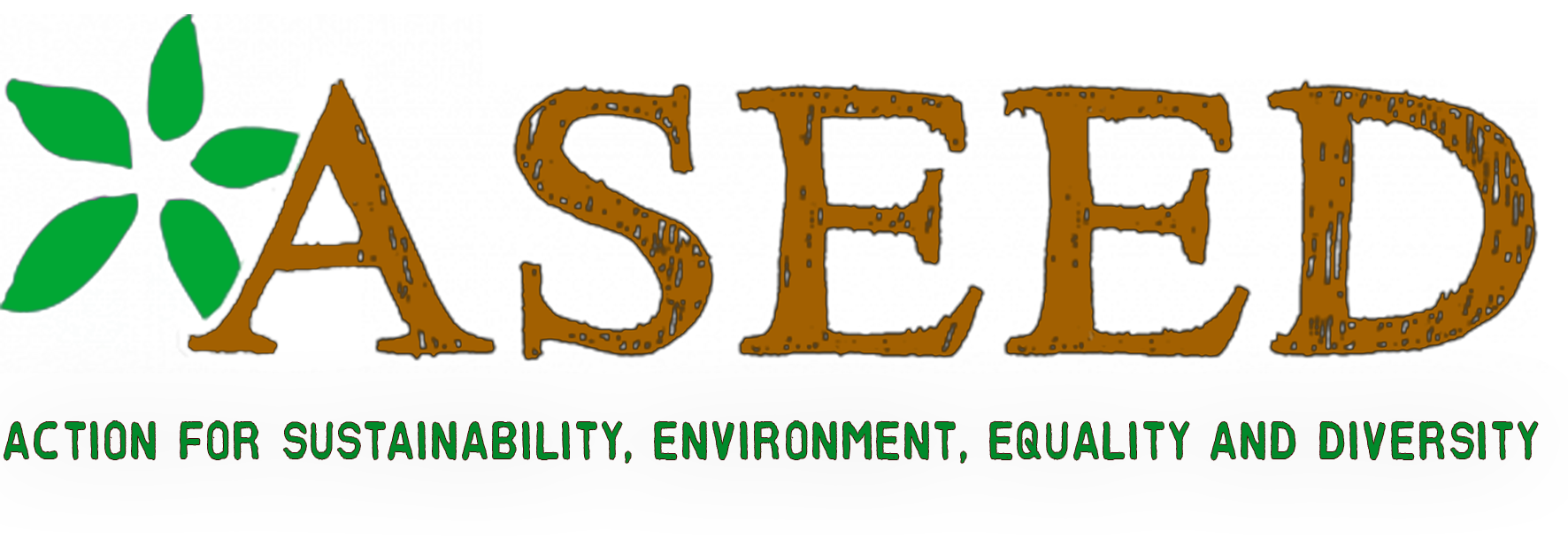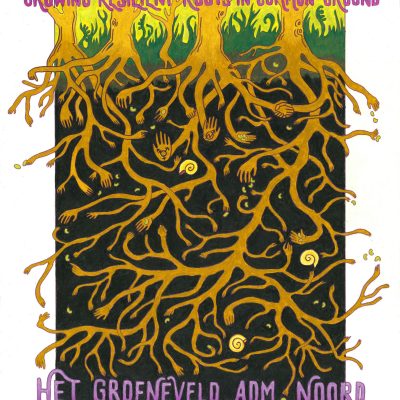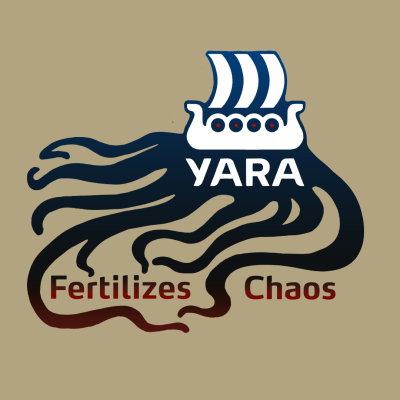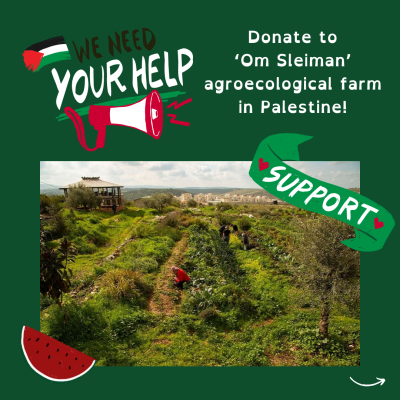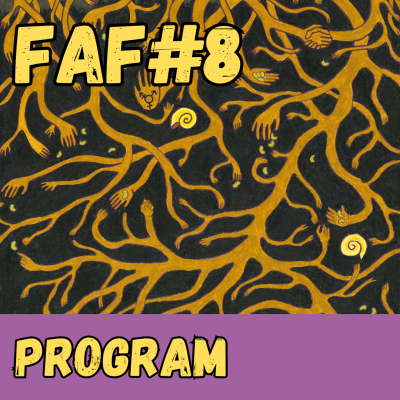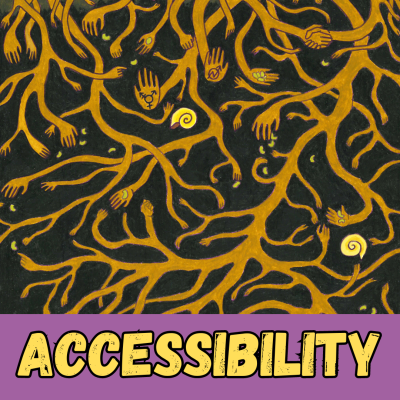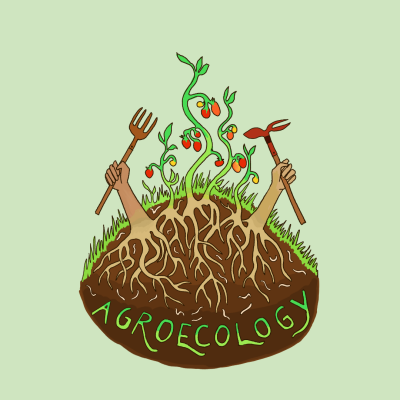The Common Agricultural Policy (CAP) is one of the oldest EU’s policies. After more than a decade of post-World War II food shortages and hunger, it was introduced in 1962 to increase agricultural production, ensure food security, protect farmers’ quality of life and stabilize markets while maintaining reasonable prices for consumers. However, the steady increase of European production has led to perverse overproduction now (2). Today, the CAP amounts to almost 40 percent of the entire EU budget. Every seven years, the CAP is renewed. The new CAP has to be introduced in 2021, and it faces new challenges to stand in line with sustainability goals, protect biodiversity and the environment (1). So, now is the time to reflect upon current impacts of the CAP and necessary changes. The post 2020 CAP must bring answers to the ecological, social and economic challenges we face. A new CAP will need to tackle the climate crisis, reverse the rapid loss of biodiversity, ensure healthy and sustainable consumption and production. It must deliver quality rural employment and decent livelihoods for our farmers and rural communities, protecting them from harmful agrochemicals. Farmers, globally, are among the first to suffer from the impact of climate breakdown, biodiversity collapse and soil degradation (2).
The idea that the CAP protects small farmers and the rural way of life is a myth. Eighty percent of CAP aid goes to just 20 percent of farms. Figures from the UK show Queen Elizabeth II gets around half-a-million euros a year. Food industry giants like Campina or Nestle have been handed hundreds of millions. Small-scale European farmers get little and poor farmers in developing nations are shut out of European markets (3). The impacts of the EU common agricultural policy on developing countries’ markets has been tremendously negative. They struggle to remain competitive against heavily-subsidised food products being dumped on their markets. A number of poor countries have increased their imports of agricultural products, and these countries are therefore not investing in their own agricultural sectors. These countries, then, have become addicted to food subsidies from the OECD countries. They have developed a dependency that is not easy to get rid off (Olivier de Schutter, the United Nations Special Rapporteur on the Right to Food and a specialist in European Union law). The EU needs policies that not only look at agriculture but consider the food system as a whole: all policies affecting food systems, and all actors along the food chain, need to work together to transition to sustainability. In “Slow Food’s” point of view, this means aligning policies on agriculture, rural development, environment, trade, health, food safety, and development. Olivier de Schutter agrees: “(We need to) produce food that maintains long-term health, not food that is depleted 80% in vitamins. (The EU) tends to focus too much on the short-term and not enough on the long-term implications of food policy. Governments should look at how we can reduce demand by focusing on increasing food protein.”
It is clear that the CAP has to change in order to become a tool that facilitates the above discussed goals. Within ASEED and the reading group we were wondering how this could look like. So basically how can the CAP push a transition towards food autonomy?! We were discussing the model of a CSA (community supported agriculture) which is for us one of the best existing examples of food autonomy in practice. We were wondering whether a CSA-like model could also work on a global level. So instead of citizens paying a monthly membership fee to their local CSA, the CAP could suggest that the EU taxpayers money that currently goes into large scale agriculture businesses could be invested in fixed, monthly membership fees to small scale farmers, family farms and rural communities with which the EU has direct trade agreements. This way the farmer is not dependent on global stock market prices, price fluctuations due to consumer and demand or climate change induced losses of the harvest. By that the EU could play an important role in regulating prices, controlling the import and export market, making sure that the global supply chains stay as direct as possible. Of course this concept has to be elaborated in much more detail, considering factors such as requirements that need to be fulfilled in order to receive this monthly contribution (free from synthetic fertilizers and agrochemicals, small scale, check of labour rights and wages, etc.). At the same time, this means a continuity of trades between Europe and the Global South. Is this just another form of dependency? Is it facilitating food autonomy? Is it desirable not to have any relation / trades with the global south anymore? What is it that we actually want to achieve?
Agroecology Europe (4) has published a paper with many suggestions on how to reform the CAP of the European Union in the Framework of the Farm to Fork Strategy which is the core of the European Green Deal (March 2020):
Agroecology Europe mentions 4 main measurements within this strategy to make the food system fair, healthy and environmentally friendly:
- Phasing out of current subsidies for fertilizers, machinery, livestock and monoculture farms.
- If basic subsidies are maintained, they should be paid on a full-time equivalent worker (FTE) basis and not on a hectare (or livestock head) basis anymore.
- The main part of CAP budgets should pay for the production of public goods, including the three main ones: the sequestration of carbon in agricultural soils, the restoration of rural biodiversity and the development of the ecological network. These subsidies should be subject to compliance with reduction of nutrient excess and pesticides dependency and also to the maintenance of a real agricultural production. This should also support the idea of mitigating and adapting to climate change; slowly getting away from the thought of only maximising yields with many known negative consequences.
- A financial support to the transition towards agroecological farming and providing trainings for transition.
And 4 main goals
- Ecologically based agriculture
Climate and biodiversity crises must be taken into account in a new European agricultural and food model. Soil will need to be regenerated by sequestering carbon, improving fertility and increasing their microbial, floral and faunal diversity. This will have the positive effect of controlling pathogens and reducing disease as well as better coping with more frequent and intense weather anomalies. Habitats and agricultural, functional and heritage biodiversity will need to be restored and conserved. This will reduce pest populations. All of this will support to mitigate climate change impacts and increase the resilience of agricultural systems to extreme weather events. Nevertheless, agriculture will also have to be less reliant on fossil fuel. It will have to reduce drastically the use of synthetic fertilizers and agrochemicals, and livestock feed imported from other continents, mostly produced in unsustainable ways. It will have to sell most of its products in short and local supply chains.
- Agricultural aid, climate and biodiversity
The time has come to no longer pay farmers to practice their job according to a business as usual model because the pricing mechanisms do not allow them to be paid sufficient and fair for their work. Agricultural aid should be paid on the basis of the production of common goods enjoyed by society as a whole, namely ecosystem services and biodiversity.
- Maintaining family farms and vibrant rural communities
Since small-scale family farms get much less support than large industrial farms while they create more jobs per hectare, this trend should be counteracted by an adequate mechanism, supporting people and not hectares:
Current subsidies to European agriculture have led to a very strong distortion of the relative costs of production factors in favour of surface, energy and capital intensity and against labour. This distortion has led to highly extractive and unsustainable production models which also contribute to job redundancy, unemployment and overexploitation of socially weaker workers. That is a clear breach to the “Do not harm” principle. Just as the energy transition begins with the phasing out of fossil fuel subsidies, the new CAP must abandon subsidies to unsustainable practices and/or conflicting with the EU’s environmental and social objectives.
- The systemic approach of agroecology
The agroecological systems approach redesigns the agricultural system based on the principle that the role of external inputs can be replaced by ecological processes, while production levels can be maintained. Thanks to its systemic approach, agroecological systems are often more profitable than conventional agriculture as recently shown by a panel of around thirty European scientists (5).
This is one of the approaches various groups throughout Europe are currently campaigning for. We in ASEED think it is time to spread the word about the CAP and the different alternatives proposed to it. The CAP is a powerful political tool. In fact, it is a policy with immediate impact on our lives and if adjusted accordingly it can have the potential to be a part of the solution to the problems we are facing instead of facilitating the problems like it currently does.
References:
- https://www.slowfood.com/eus-common-agricultural-policy-key-things-you-should-know/
- https://www.goodfoodgoodfarming.eu/about-cap/
- https://www.debatingeurope.eu/focus/arguments-for-and-against-the-common-agricultural-policy/#.Xwx6gC35zjB
- https://www.agroecology-europe.org/wp-content/uploads/2020/04/AEEU-Position-paper-CAP-2020-FINAL.pdf )
- http://www.aardeboerconsument.nl/wp/wp-content/uploads/2019/10/19-10-08-Economic-potential-agroecology-jdvanderploeg.pdf
